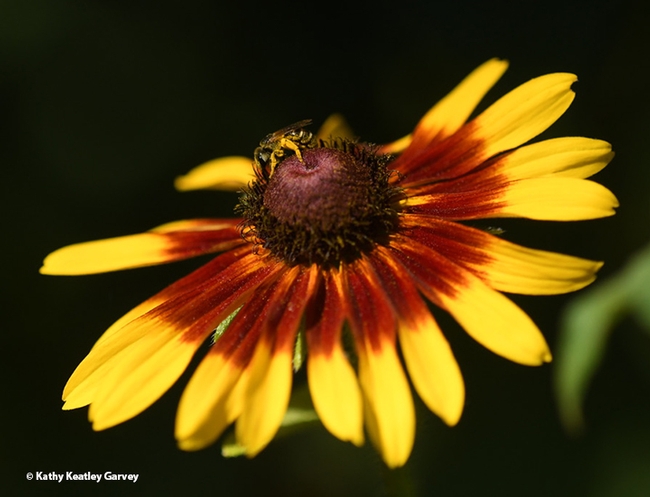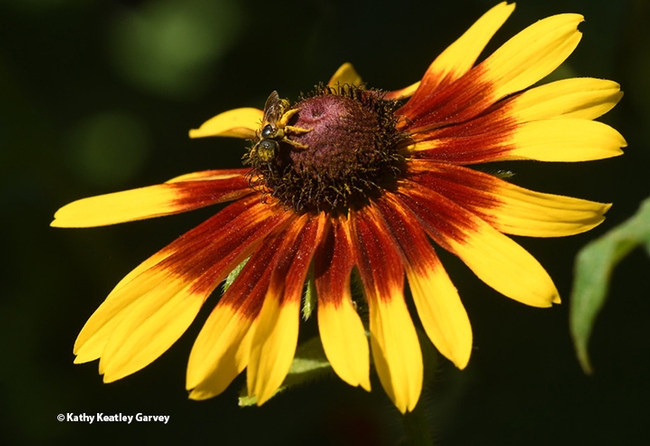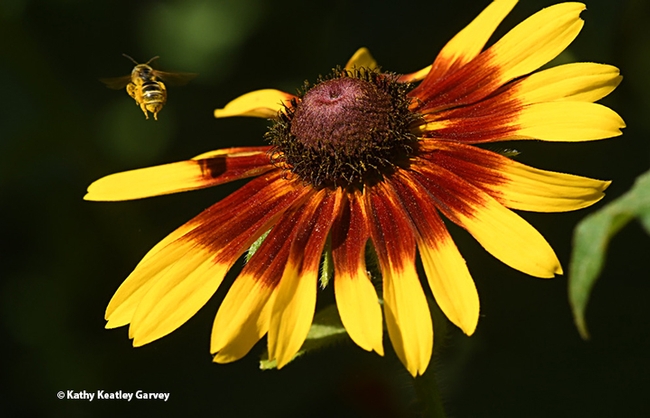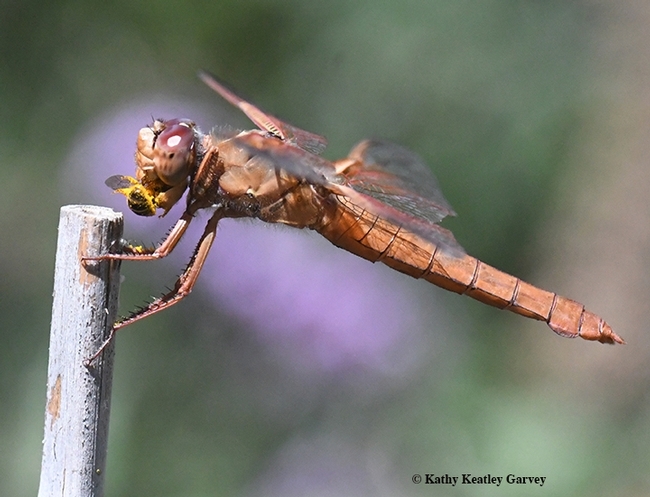"Sweat bees have earned their common name from the tendency, especially of the smaller species,to alight on one's skin and lap up perspiration for both its moisture and salt content."
So write University of California scientists in their award-winning book, California Bees and Blooms, a Guide for Gardeners and Naturalists.
California has some 1600 species of undomesticated or wild bees, point out the authors (Gordon Frankie, Robbin Thorp, Rollin Coville and Barbara Ertter).
And one of them is the sweat bee, Halictus ligatus, a member of the family Halictidae. It's a medium-sized, ground-nesting bee with a striped abdomen.
This week one of these species (as identified by research scientist John Ascher) looked especially striking on a Black-Eyed Susan, Rudbeckia hirta, a member of the Aster (Asteraceae) family. Both the plant and the bee are natives.
Several years ago we managed to photograph a flameskimmer dragonfly, Libellula saturata, munching on one of these sweat bees. Not a good day for that little gal!
No dragonflies were around, however, when we watched this one foraging on a Black-Eyed Susan.
Did you know that the Black-Eyed Susan is the designated state flower of Maryland? And that it was the inspiration for the University of Southern Mississippi's school colors (black and gold)? And that it's a larval host to butterflies such as the bordered batch, gorgone checkerspot and silvery checkerspot?
Who knew? If you plant it, though, be aware that it is toxic (when ingested) to cats.
Attached Images:

A sweat bee, Halictus ligatus, foraging on a Black-E

The sweat bee, Halictus ligatus, moves around the Black-Eyed Susan. (Photo by Kathy Keatley Garvey)

The sweat bee, Halictus ligatus, covered with pollen, takes flight. (Photo by Kathy Keatley Garvey)

A flameskimmer dragonfly, Libellula saturata, munches on a sweat bee, Halictus ligatus. (Photo by Kathy Keatley Garvey)